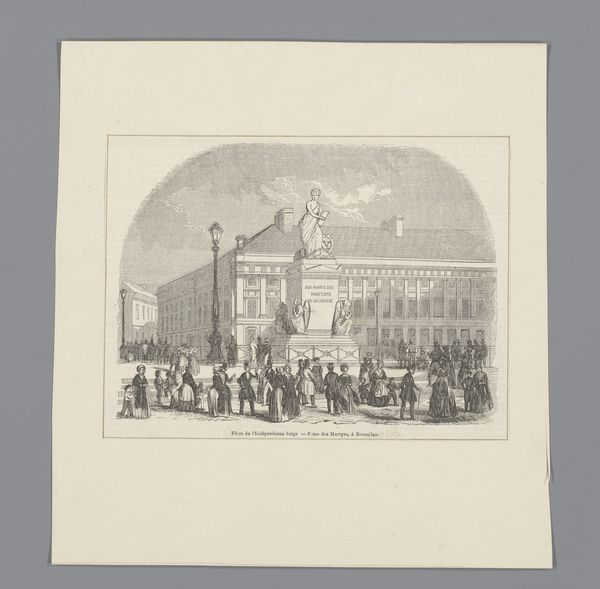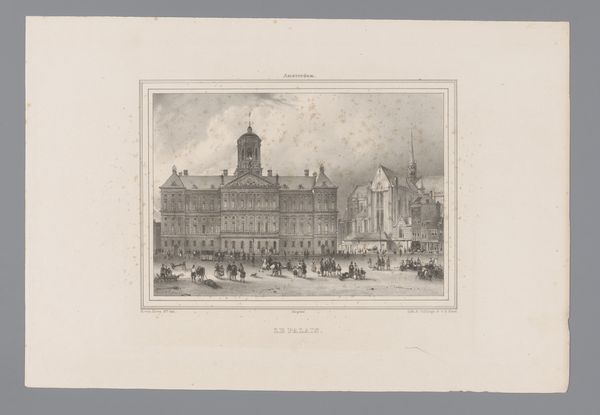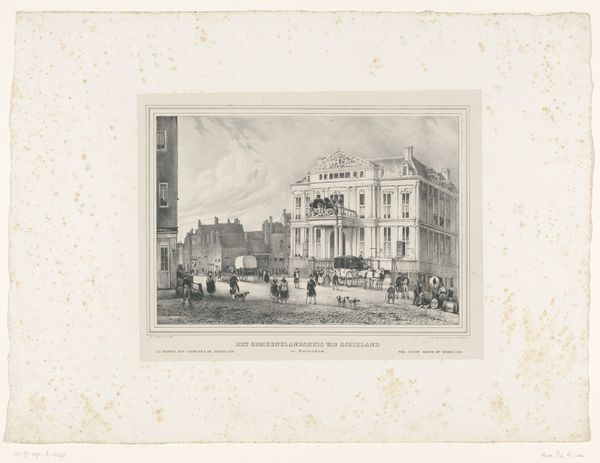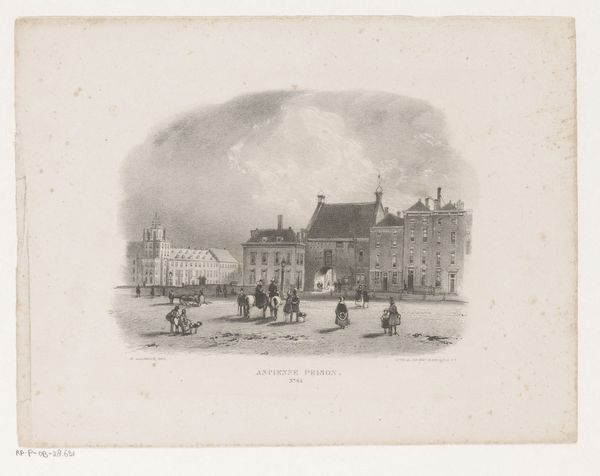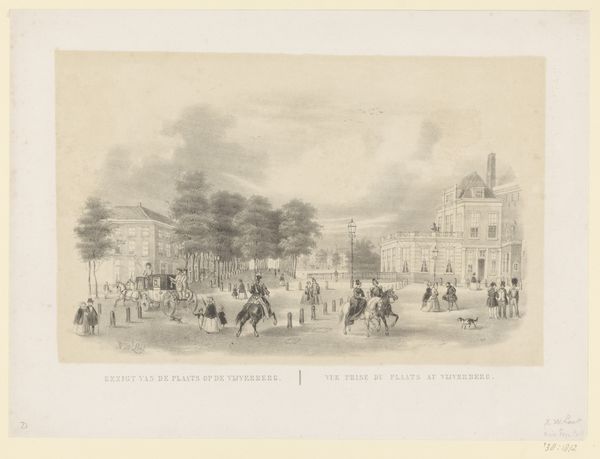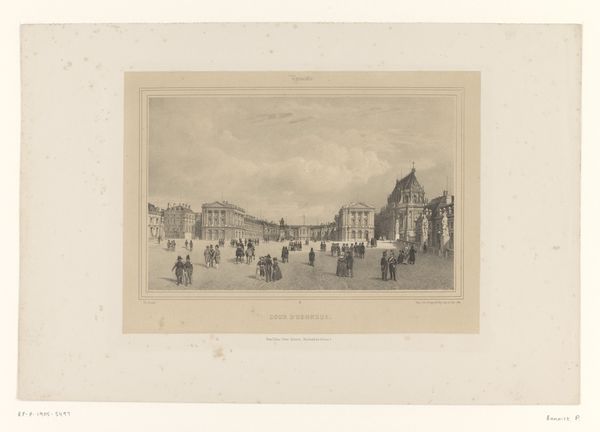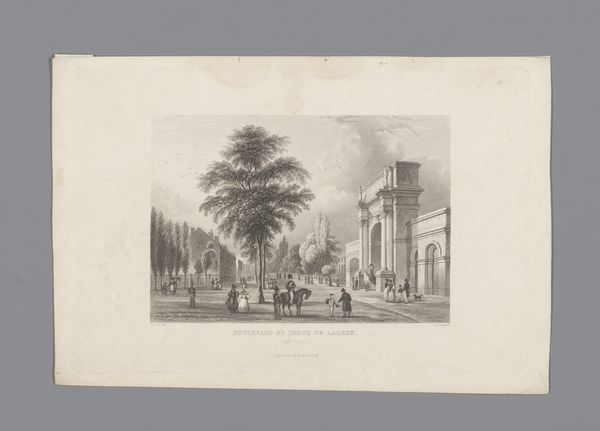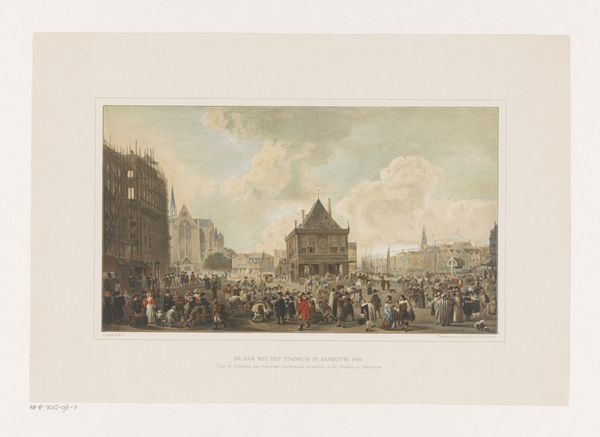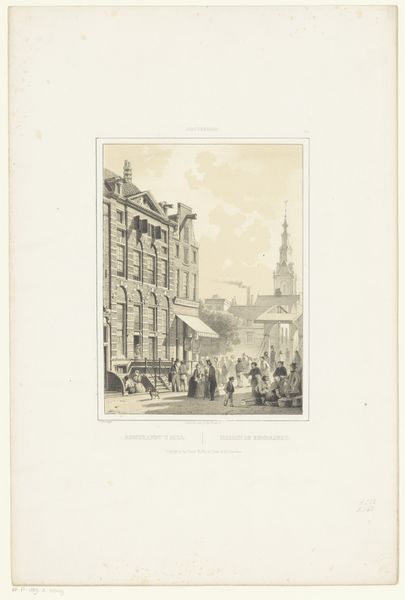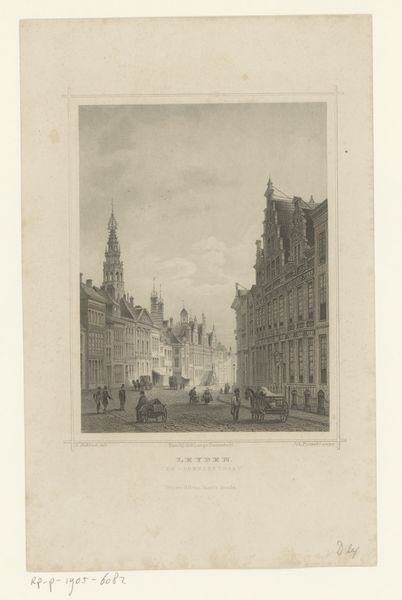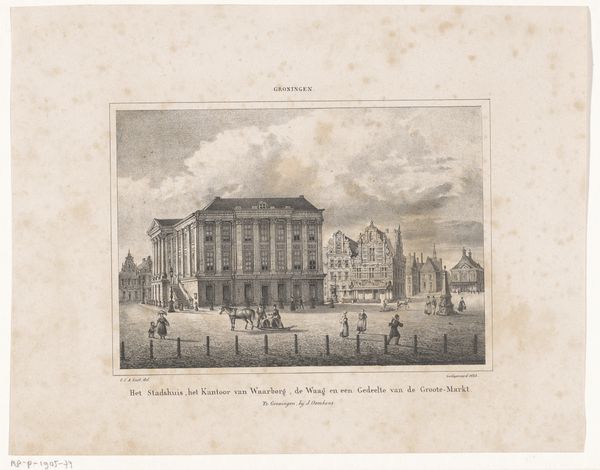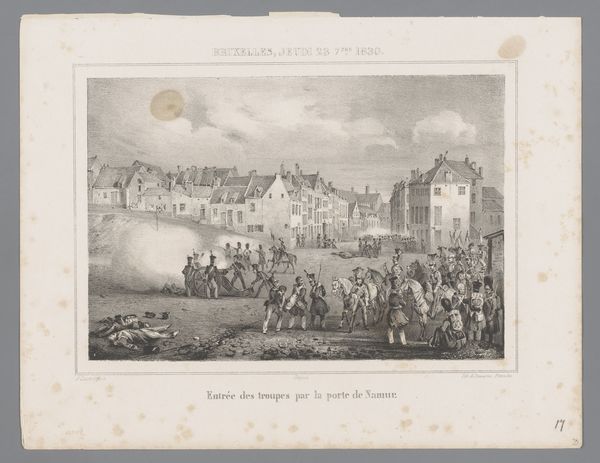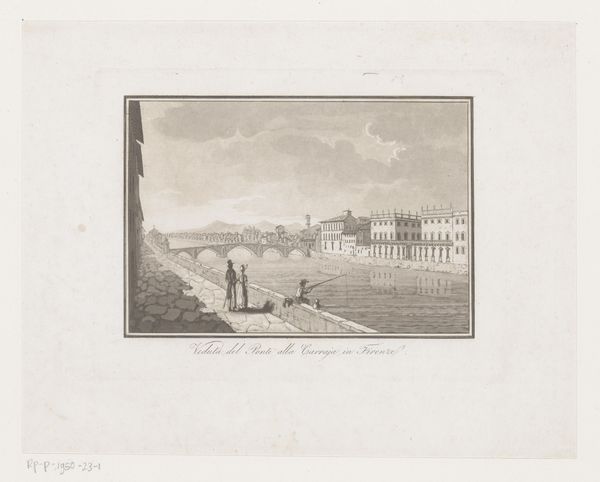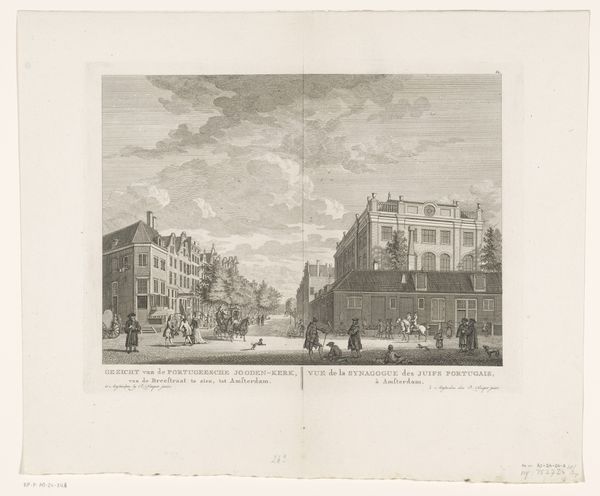
drawing, print, etching
#
drawing
#
neoclacissism
# print
#
etching
#
cityscape
#
realism
Dimensions: height 288 mm, width 425 mm
Copyright: Rijks Museum: Open Domain
Editor: Here we have Huib van Hove's "Westzijde van het Paleis op de Dam in Amsterdam," an etching and print from 1835. The detail is incredible. It has an almost photographic quality, capturing everyday life around the palace. What stands out to you most in this image? Curator: What strikes me is the weight carried by the Palace itself. Though depicted in a scene of daily life, that imposing structure signifies power, history, and even aspiration. The globe atop references global trade, and therefore Dutch influence. Consider the symbolism of its Neoclassical style, deliberately emulating ancient Greek and Roman architecture. What does that conscious echoing suggest to you? Editor: An aspiration to lasting power, like the empires of old? Curator: Precisely. And note how the people are rendered, smaller in scale, moving about their lives *in relation* to this structure. There’s a deliberate commentary here on civic life. It projects an ideal order. Editor: So, it's more than just a depiction of Amsterdam; it is a statement. Curator: Absolutely. The very act of etching, meticulously recreating the scene, implies an importance, a desire to preserve this particular view, this intersection of power and the everyday. Think about the enduring resonance of classical forms through periods of immense social change. Editor: I see it now. This isn't just a pretty cityscape. The artist uses this style to convey a message about the established order. I will never look at cityscapes the same way again! Curator: Me neither. And it reminds us of how structures outlive people and memories shift over time.
Comments
No comments
Be the first to comment and join the conversation on the ultimate creative platform.
